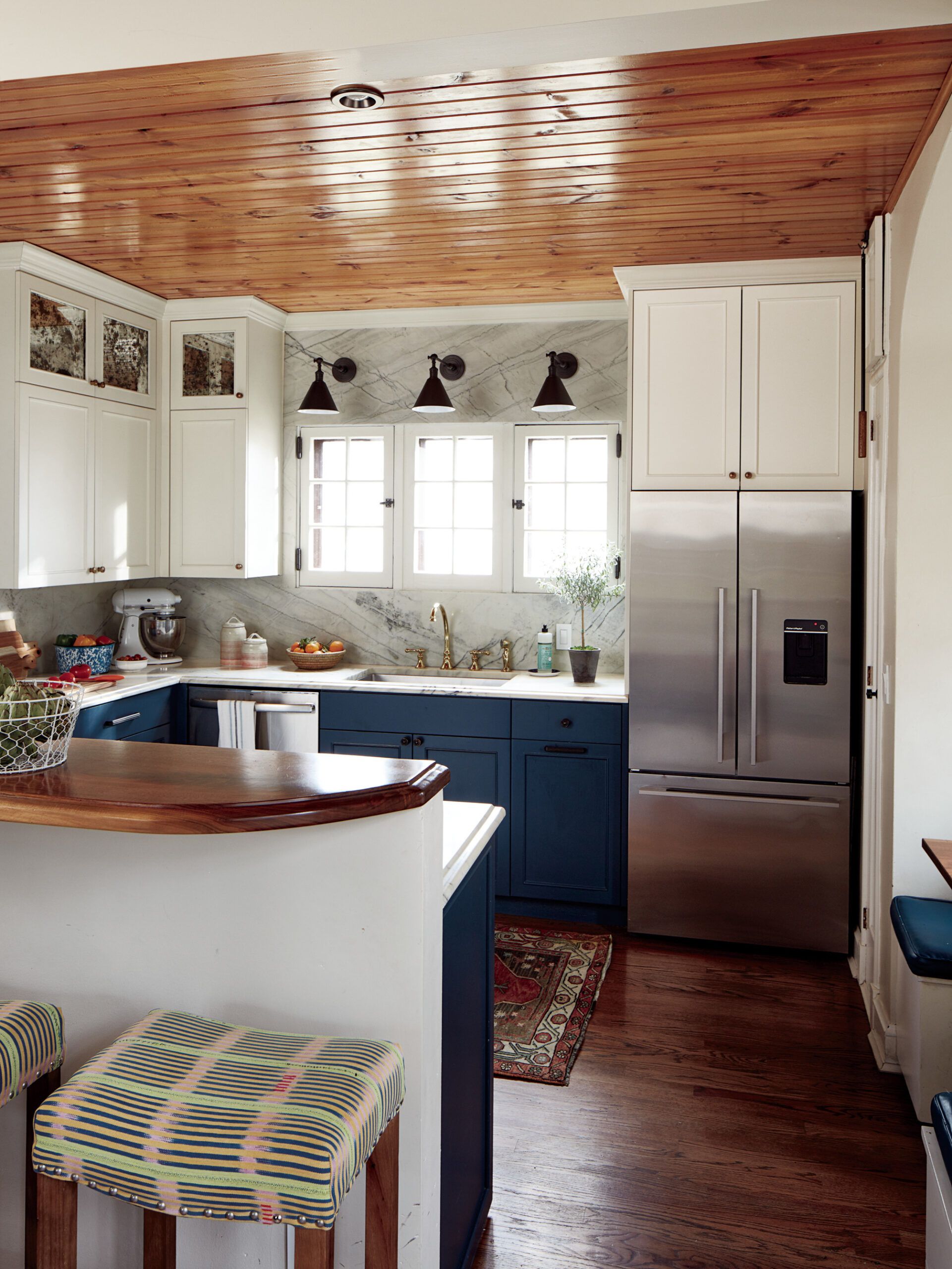
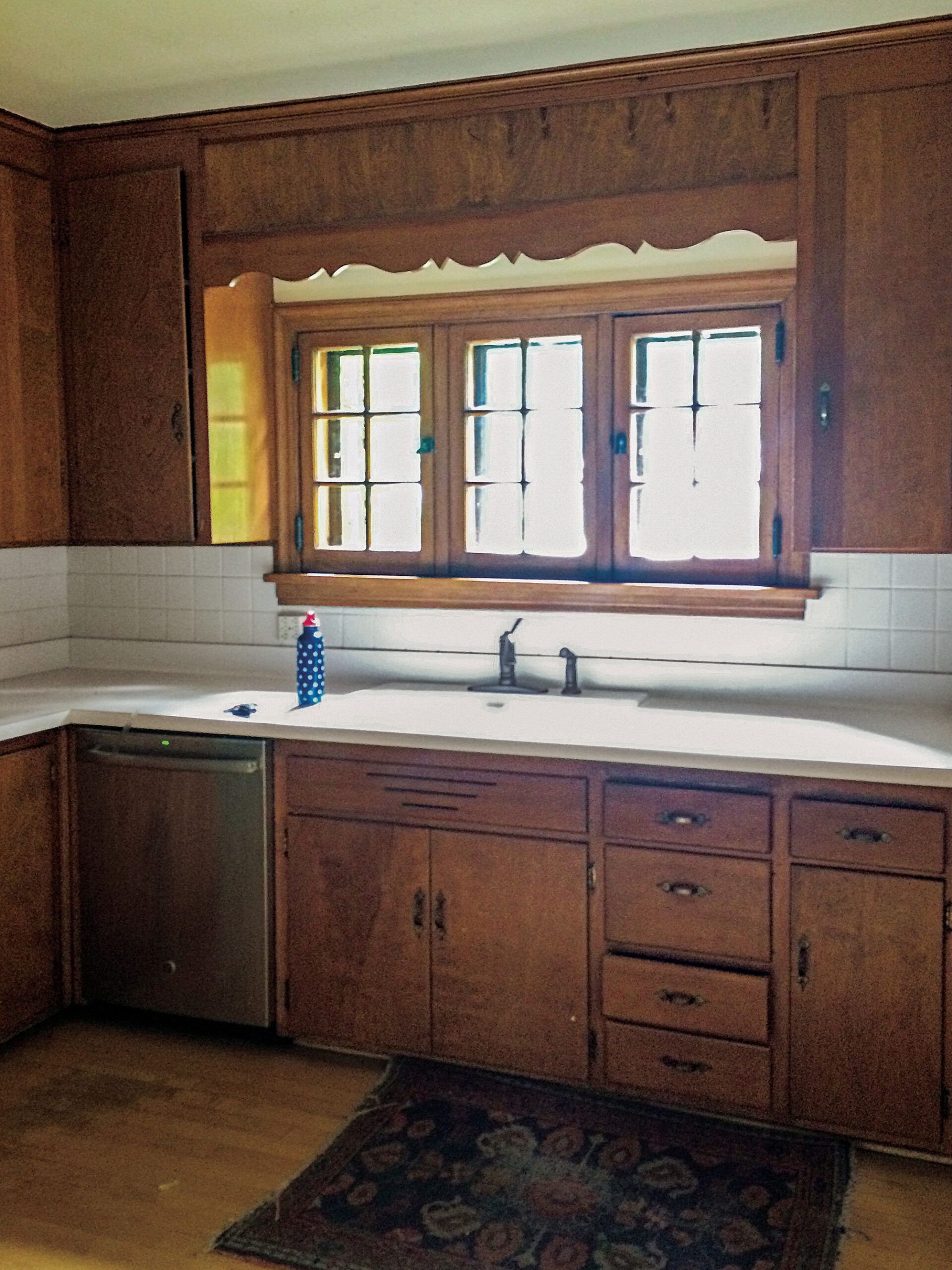
This story originally appeared in the Winter 2021 Issue of This Old House Magazine.
Bumping out, adding on—big changes like these can really blow a budget. So it was a given when Rachel and Chad Alcorn renovated the kitchen in their 1928 Tudor-style home in Glen Ellyn, IL, that they would not be adding square footage or moving walls.
“We wanted to add storage, prep surfaces, light, and a more open feel, but we didn’t have unlimited funds,” says Rachel. Also key: retaining treasured original details, including a trio of casement-style sink windows and a dining nook with an arched opening.
Luckily, as an interior designer, Rachel knew just how to maximize the existing 200 square feet, trading dated finishes for a character-rich look that includes a pine-paneled ceiling, blue base cabinets, and counters made of pale marble that continues up the walls.
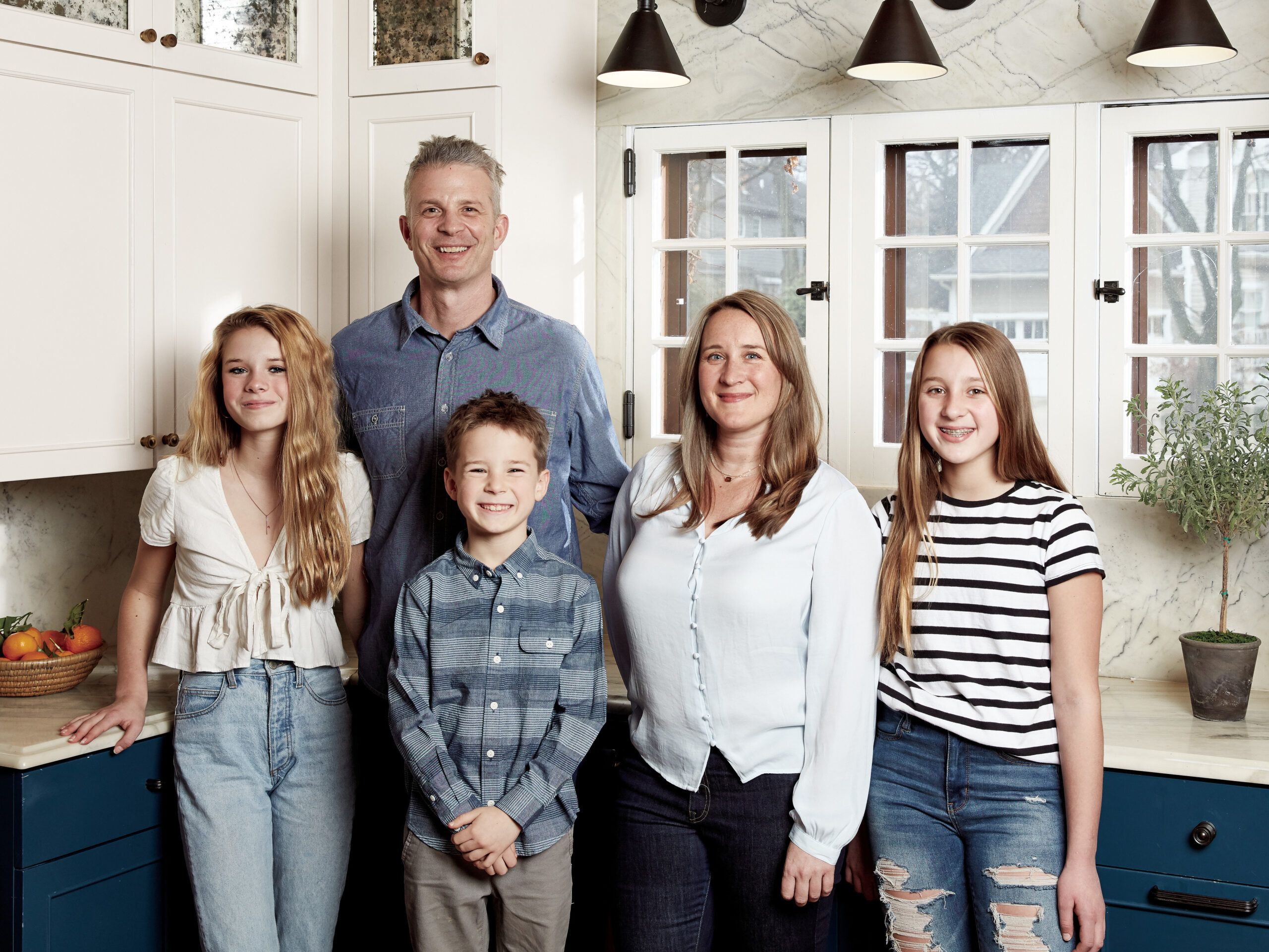
First, to brighten the space and add an airier feel, Rachel removed the upper portion of the range wall that’s shared with the dining room, where light streams in from a bank of tall windows.

On the dining room side, a raised walnut breakfast bar adds more casual seating. Just inside the entry to the room, right off the foyer, she built in an antique pine cabinet to serve as a pantry, another warm wood accent that makes the new kitchen feel as though it was added onto over time.
“Forget ‘bigger is better.’ Think carefully about how a space is used, and by whom, to guide you toward optimal square footage when renovating.”—RACHEL ALCORN, owner and principal, Two Hands Interiors
Now the space seems larger and functions better, yet still feels cozy. “We love that the kitchen is eclectic and warm, with improved flow, way more counter space, and updates that are in character with our home’s architecture,” Rachel says. A perfect fit all around.
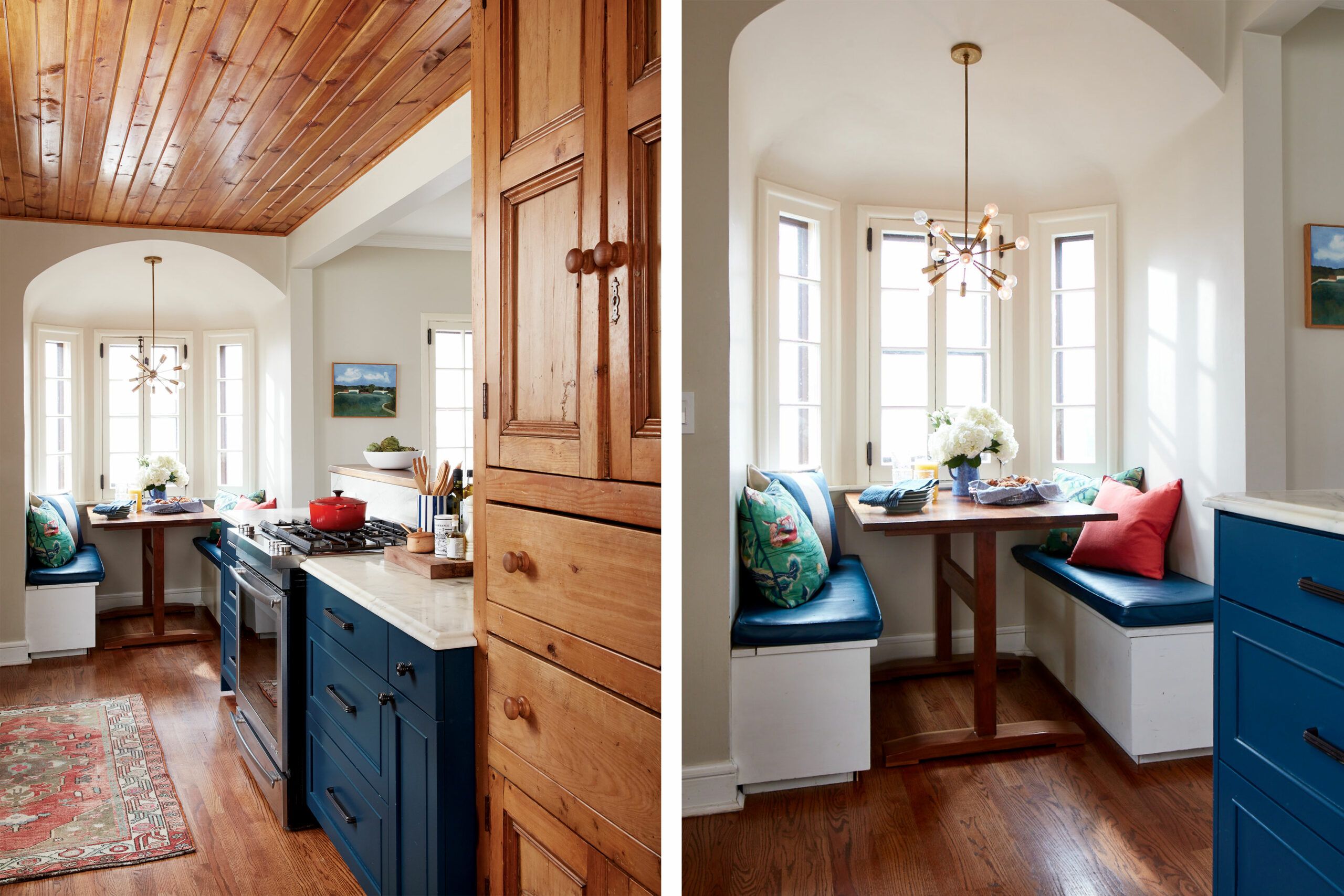
On the homeowners’ list of musts: keeping the original wood casement windows above the sink and adding a lighter look overall. Painting the windows white to match the cabinets, running the marble counters onto the backsplash and up to the ceiling, and swapping a soffit for a trio of black library-style sconces accomplished both goals.
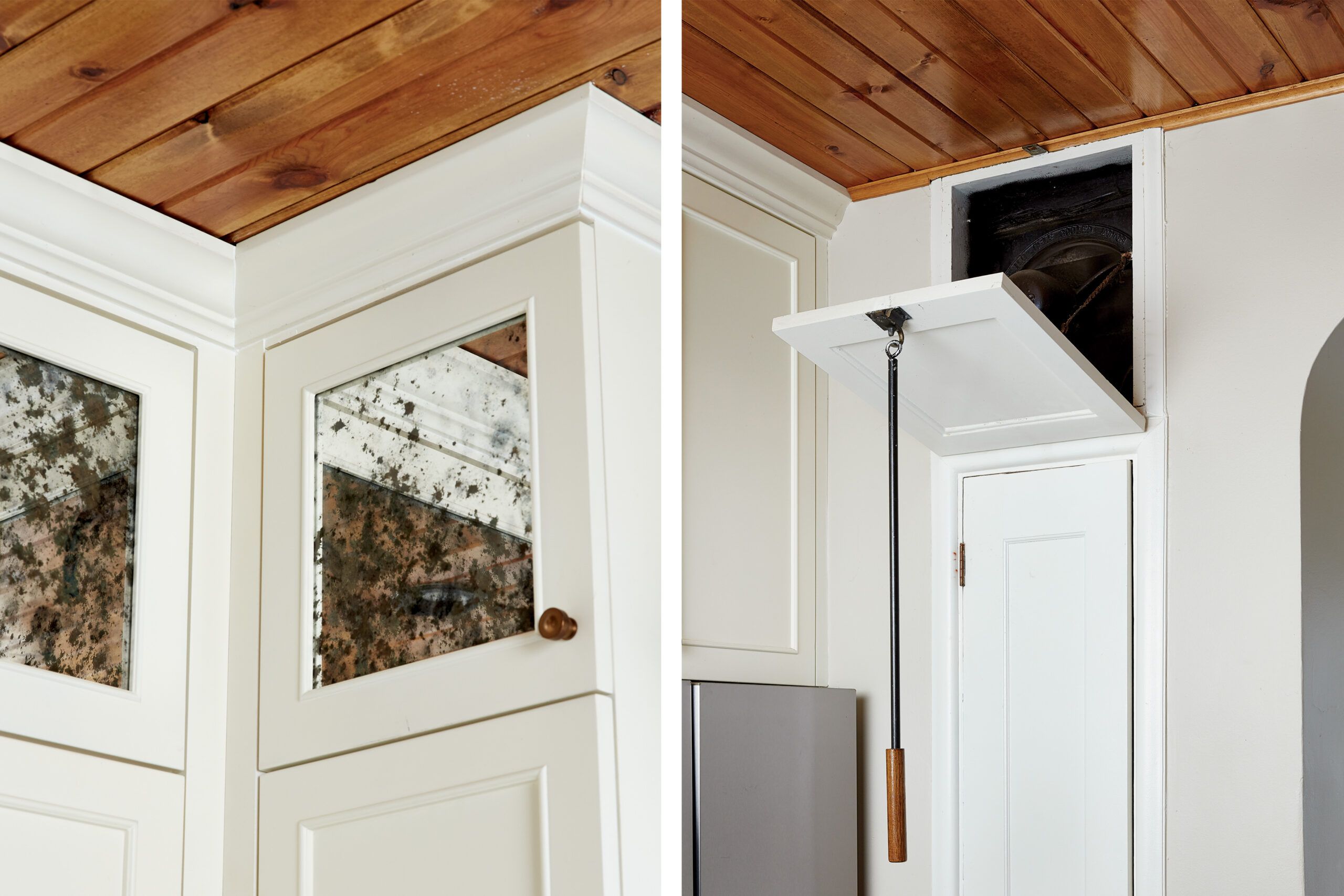
Get This Look
Period-style pieces from different eras mix with timeless finishes for an easygoing, eclectic look.
1. Space-age lighting
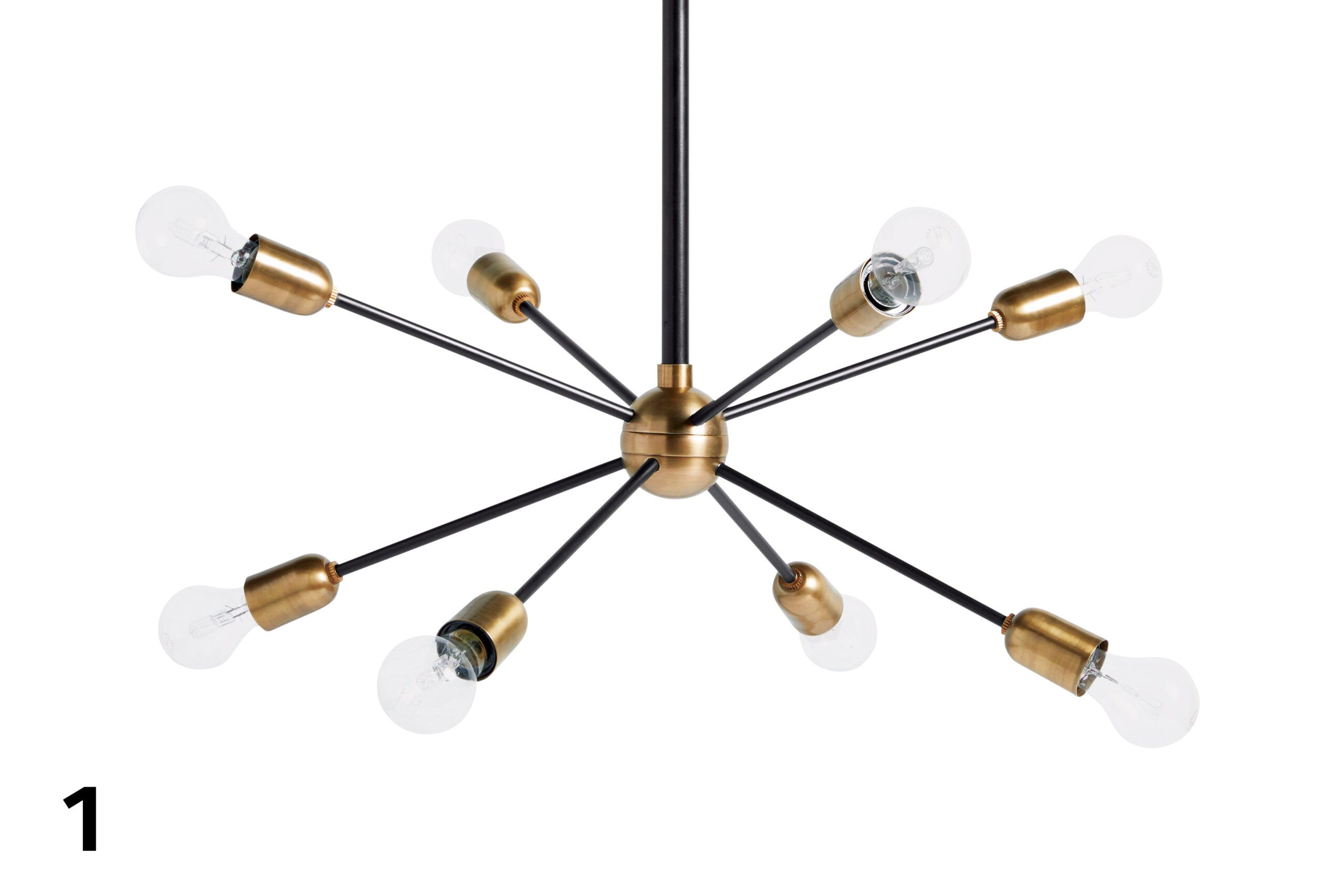
“A sixties-style chandelier can be a star in the kitchen where other lighting is simple,” says Rachel. Sputnik Chandelier, $599; arhaus.com
2. Iron-look pulls
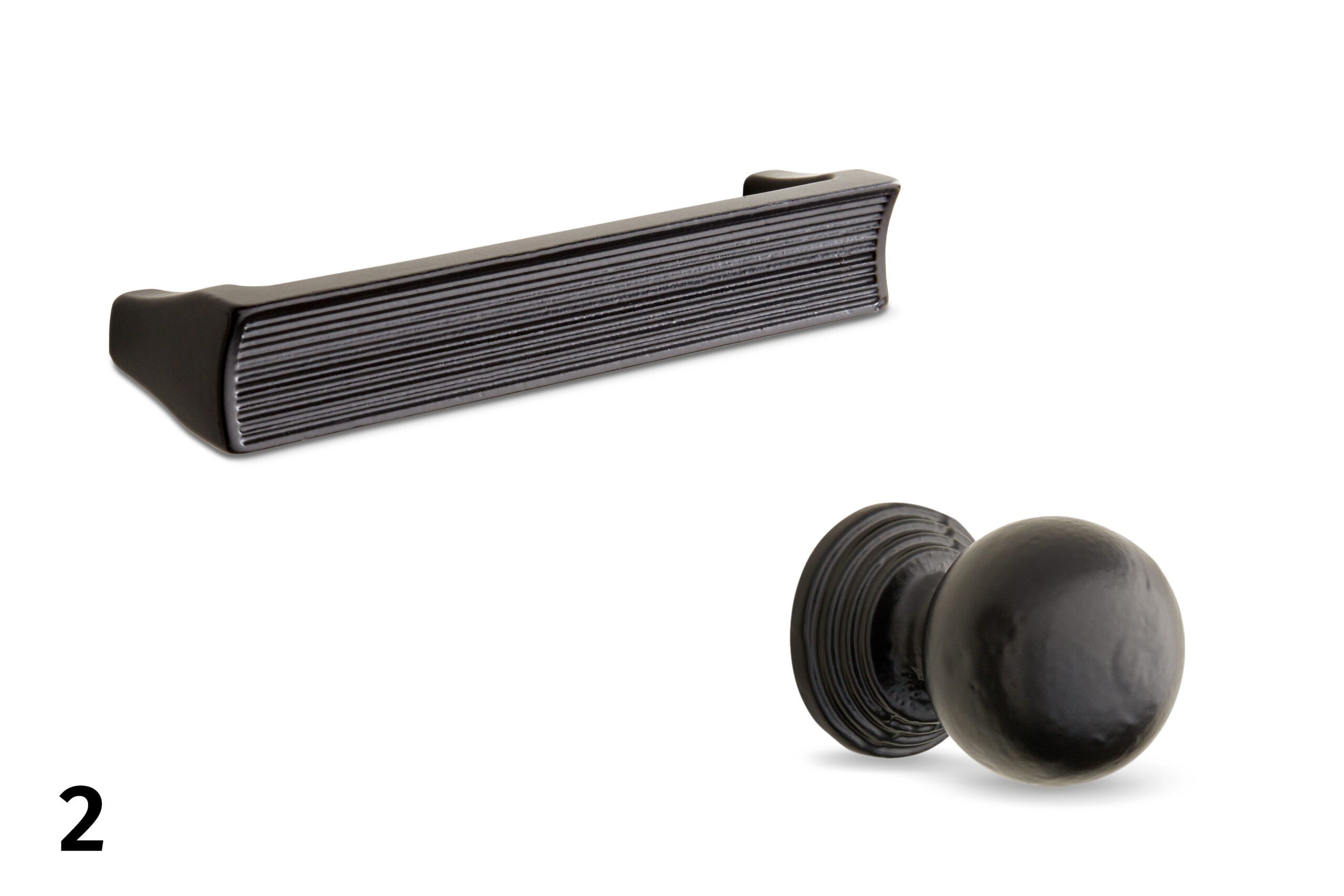
Matte black hardware offers a handsome counterpoint to glowing brass accents. Hadey Iron Cabinet Pull, $14, and Cast Iron Round Knob, $10; signaturehardware.com

3. Blue cabinet paint
“Deep blue is a good choice for base cabinets—it’s grounding, yet adds personality,” Rachel says. Try Duration Home Interior Acrylic Latex in Loyal Blue, from $73 per gallon; sherwin-williams.com
4. High-shine faucet
A gooseneck spout with lever handles and a side spray in a glossy brass finish has a traditional look that suits many vintage homes. Widespread Kitchen Faucet in Polished Brass, $370; kingstonbrass.com
Floor Plans
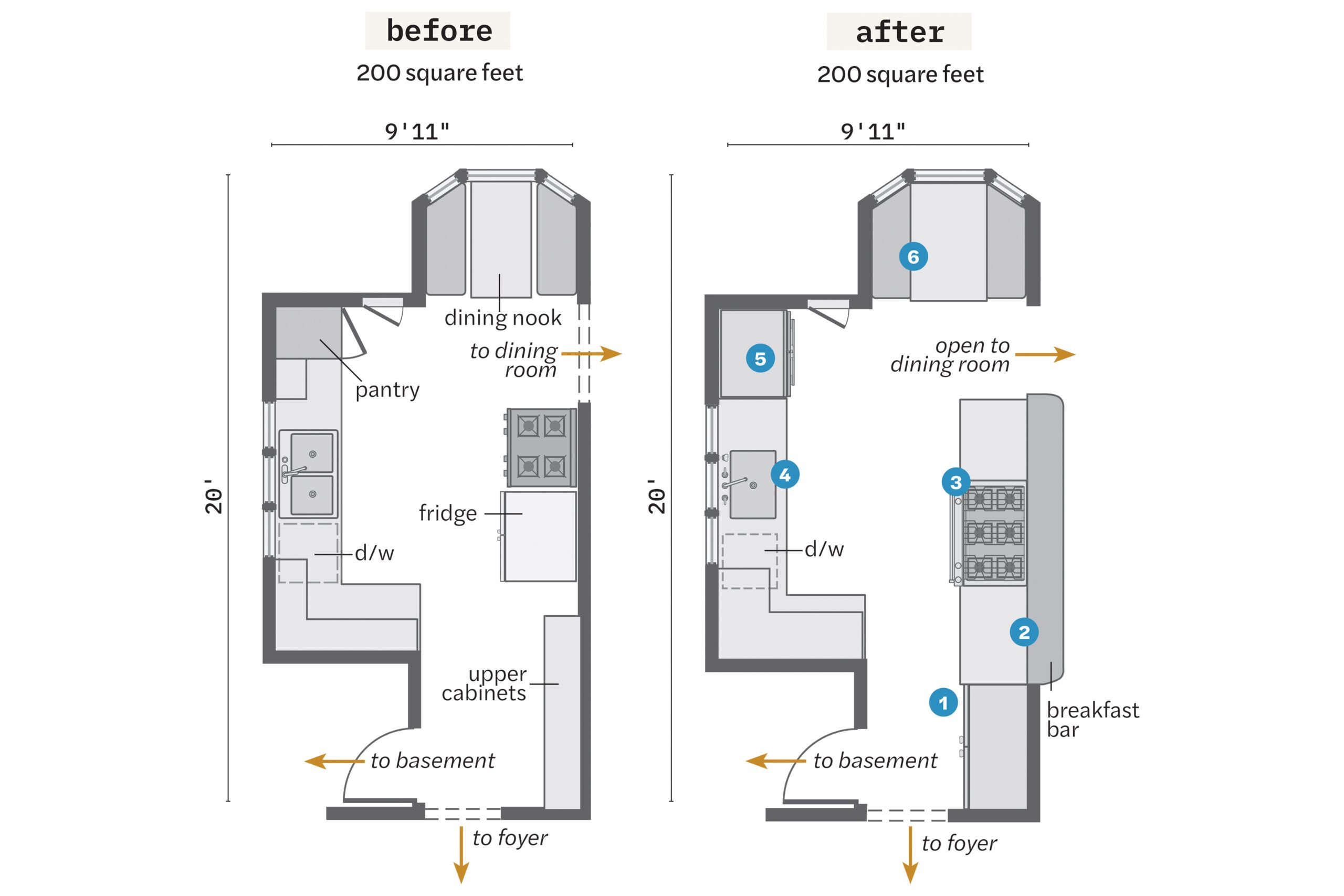
Not altering the existing footprint preserved the scale of the 1928 house. Maximizing every inch added storage and prep space; removing a wall added light and air.
- Built in a cupboard opposite the basement door to serve as a pantry and hold the microwave, adding base and crown molding stained to match its antique pine.
- Removed about 14 feet of wall to open up the kitchen to the dining room and its wall of windows; added base cabinets and counters on either side of the range, plus a breakfast bar for more prep space and seating.
- Shifted the range about 2½ feet away from the passageway to the dining room, adding landing space on either side and drawer storage.
- Removed a ceiling soffit and valance over the sink; put in three sconces for task lighting.
- Relocated the fridge to the right of the sink, where a built-in pantry had stood.
- Added hidden storage with hinged-top benches built in on both sides of the dining nook.
